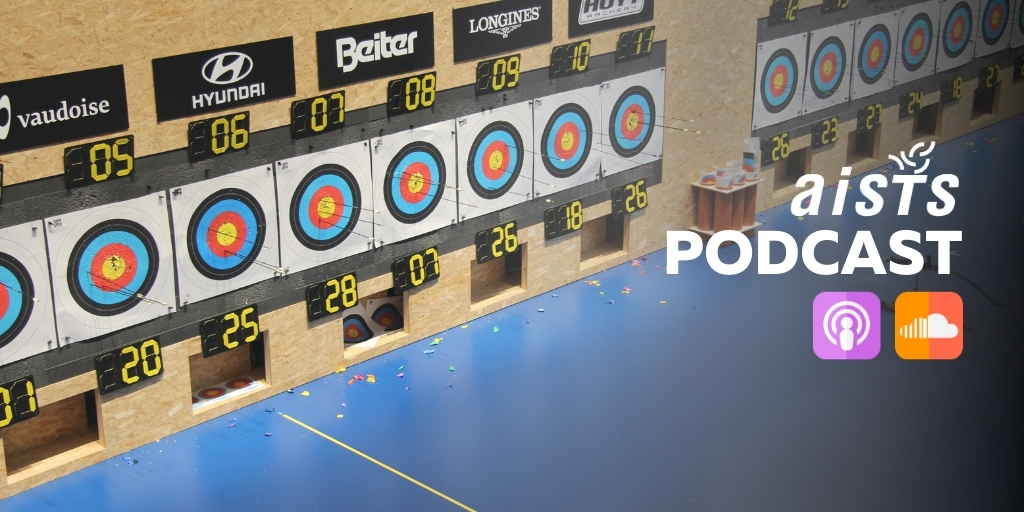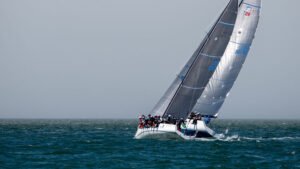
AISTS SPORT MEDICINE PODCAST #60
What are the impacts of having AISTS classes outside?
Physical and mental health together with social and communications skills all seem to be benefactors of hosting classes in outdoor, BUT how does health and safety, transport and weather impact outdoor lectures? Find out more in this episode on which modules have an increased benefit when taught outside.
In this AISTS Sport Medicine podcast, AISTS Class of 2019 Vish MANNAVA, Gian KELLER, the impacts of having outdoor classes.
Gian Keller: Good morning Vish. Thank you very much for accepting my meeting request. As you know, students are spending during the year more than 700 hours in our classroom at AISTS. And I know that you are in favour of outdoor teaching. Therefore, I would like to have a quick discussion with you regarding outdoor teaching here at our University. What are for you the main strengths of outdoor teaching?
Vishwanath Mannava: Thank you, Gian for this meeting to discuss the impacts of outdoor teaching. I will tell you three primary benefits of outdoor learning.
- Physical health – Being outdoors will improve our physical health by allowing us to move around, stand and not sit all day. We can do light exercise, we can do walking as part of the class or even have walking classes. Being outside reduces stress and improves immune function, reduces obesity, it increases the good bacteria in the body/reduces bad bacteria, and increases Vitamin D intake.
- Mental health – Studies show that teaching outdoors increases students’ interest in a subject and their motivation to learn. Students report liking their school more when lessons are held outdoors. Now, the essential need of young people for excitement and challenge can express itself as anti-social behaviour if it is unfulfilled. So having classes outdoors can help fulfil that need. Regarding teachers, studies have found that they have and enjoy the same benefits as students. By coming out of their comfort zone into the natural world, they become more enthusiastic about teaching and bring innovative teaching strategies to the classroom.
- Social and Communication Skills – Studies have shown that psychosocial skills improve when outside. Being outside reduces stress, it leads to better interaction with peers and improves teamwork.
Gian Keller: I understand. But Vish nevertheless, I have to say I have some concerns. I also see some essential weaknesses in this teaching style.
- Health and Safety: As a teacher, you are responsible for the students in your class. And there are a lot of health and safety regulations here in Switzerland as you know. Imagine a student having an accident or having a big pollen allergy.
- Reorganisation and training of teachers: Teachers would need to undertake training and reorganise their entire lesson structure in order to teach outdoors in an effective way. Furthermore, AISTS itself would need to reorganise itself towards the set-up of outdoor teaching.
- Curriculum requirements: For some classes, it will be very difficult to be reached outdoor, just imagine the law module. As a university, you need to maintain a certain curriculum standard, which maybe not be achieved through outdoor teaching.
But now, Vish, please let’s also talk about our environment. So I will just quickly discuss the threats.
- Additional costs: There could occur some additional costs. Just think about the transportation costs or even litigation costs because students have an accident and they suing our institution for that.
- Weather conditions: You know, they are not always favourable here in Switzerland. Problems could occur, such as heart strokes or hypothermia.
But now Vish, what are for you the big opportunities for outdoor learning?
Vishwanath Mannava: Yes, I see great opportunities for outdoor lessons and will just quickly touch on some of them:
- SSE – The sustainability module. This is perfect because the main theme is sustainability and there is no better classroom for sustainability than the outdoors. Students will gain a newfound respect for the environment and they will think about their interaction with the environment.
- Field visits – During the field visits, as you know, we spend most of our time indoors in conference rooms. However, some presentations could be held on the field of play, such as a basketball court at FIBA or on a football pitch at UEFA, thereby creating stronger memories of the material and of the visit for students.
- Kolb ELT – I would like to talk about the Kolb method. David Kolb created an experiential learning theory which involves 4 stages (observation, conceptualization, experimentation, and experience). According to his theory, “the impetus for the development of new concepts is provided by new experiences”. Therefore, learning the same concept outdoors can aid the learning of students”.
Gian Keller: Vish, this has been a little SWOT analysis. I believe the solution to this is somewhere in the middle. Our class is currently heavily focused on indoor teaching and even when we are going to field trips, most of the time spending it in the offices of the institution that we are visiting. There is a study by the University of Illinois showing, that if we alternate between indoor and outdoor teaching, we can benefit in terms of focus. But we spoke now a lot about theory. Could you please give me some practical examples of how you would implement it here at AISTS?
Vishwanath Mannava: Of course. Let me point out that we are surrounded by lots of green space at the Synathlon.
So, here are two examples:
- There are a lot of chairs and tables already in place outside the Banane, so we could utilise them to hold a class during the Medicine module. So, for example, we are having a class explaining the physiological functions of the human body. We could use chalk and draw on the ground outside, thereby making the learning more visual. And we can use technology that can help us to reduce the noise, so students could use their headphones and the teachers can use a microphone when teaching.
- The second example is field visits – during the field visit to UEFA, as we know, we do a simulation exercise which is held inside the headquarters. We could do that same exercise in the Nyon stadium across from UEFA. This will allow students to move around, they would be in the real environment of a stadium. They would feel as if they would be actually at a game. And the post-exercise briefing could also be held outdoors and this would greatly improve learning.
Gian Keller: Okay, I see. Thanks again for your time and your openess and opinion on this topic. I have to leave now for another meeting, but we should definitely further discuss this very interesting topic.
Vishwanath Mannava: Yes. Thank you very much Gian!
You can find more AISTS Sport Medicine podcast on our Soundcloud channel or on the Apple Podcast app. To learn more about the AISTS Master of Advanced Studies in Sport Administration and Technology, visit https://aists.org/education/masters-degree/
Recent articles





